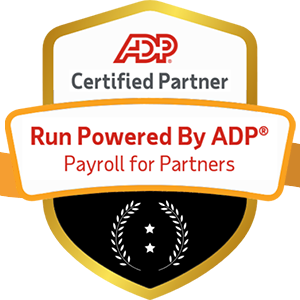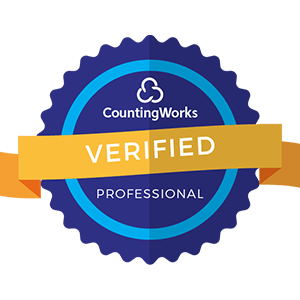
Workplace training today looks very different from the boring seminars of yesterday. Forward thinking companies now leverage innovations like microlearning, gamification, and adaptive platforms to engage employees and accelerate skill building with proven impacts on performance and retention.
Let’s explore how leading US brands like Oracle, Walmart, and Salesforce tap personalized and results driven training technologies to transform stale L&D protocols into experiences that make development irresistible. You’ll discover how innovative companies meet digitally native employees where they are, transforming compliance training into mobile accessible pathways for unlocking potential.
The business case speaks volumes, too, with next gen learning programs reducing turnover and moving the needle on productivity markers that boost bottom lines.
This article unpacks three training game changers powering the modern learning organization. You’ll find real world examples plus expert insights on weaving people development into corporate strategy. Let’s dive in.
Microlearning breaks complex topics into compact 5-10 minute video lessons accessible on-demand. This bite-sized format fits with shrinking attention spans and hectic mobile lifestyles. Short bursts repeated over time cement knowledge through repetition.
For employees, microlearning means skill-building without getting overwhelmed. Quick video modules split more extended training programs into comprehensible parts focused on precise learning objectives. Post-video knowledge checks assess understanding, providing prompts to apply concepts.
For employers, microlearning offers scalable development with tangible returns. Segmenting training into targeted segments makes the material easier to absorb. This sticks better than hour-long lectures with tenuous connections to actual work.
Let’s consider examples where major companies tap microlearning:
US Bank front loaded its new hire onboarding program with microlearning for faster proficiency. Short 5-7 minute videos organized by modules allowed new employees to quickly learn critical aspects of the bank's products, culture, and systems without information overload.
Surveys found over 90% of recent college grad hires felt fully ramped up 60% faster with microlearning compared to past years. They also rated confidence levels 15% higher and reported a greater connection to US Bank’s mission.
Target enhanced frontline leadership capability by making management best practices accessible through microlearning. Short modules combining research insights, inspirational talks from executives, and practical tips drove increased engagement survey scores in over 75% of locations with actively participating leaders.
District managers report that micro learning sessions gave store leaders vocabulary to foster connections with teams despite remote environments during the pandemic. And the consistent leadership messages keep far flung managers aligned.
Microlearning offers the ultimate training flexibility education at the moment of need. Next, explore how gamification builds skills through friendly competition and rewards.

Simply put, gamification applies elements like scoring, quests, and rewards typically found in games to training content. But gamified learning is science, not gimmicks. Structured right, it’s a research-backed method for motivating behaviors that fuel skill-building.
The principles tap into human desires for achievement and validation. Game components prompt the release of neurotransmitters like dopamine, which drive motivation and learning in the brain. It’s why getting to the next level or earning a badge feels so satisfying!
Gamified training also provides instant feedback so participants can self-correct quickly. This contrasts with old manager-centric modes where yearly reviews marked the only chance to improve.
Let’s see gamification in action:
Walmart built an augmented reality game teaching customer service skills to counter high turnover among store associates. Participants walk around the sales floor completing real-life missions like finding products for animated shoppers, speeding through checkout, and resolving returns issues.
Stores with above average engagement with the game saw 37% better retention over one year. Customers commented on associates’ improved product knowledge plus readiness to assist.
Salesforce developed an interactive role-play simulation to train sales teams on launching a complex new product. Participants raced to complete skill-building quests, quizzes, and online discussions to earn badges that unlocked advanced content.
Compared to past learning programs rolled out via manuals, the game-based launch training drove a much deeper understanding of product details and value positioning. After release, 60% more participating teams hit goals for the offering.
Gamification works because it's inherently motivational and social. The competitive elements introduce accountability while fostering team connectivity. Participants strategize quest completion together instead of learning solo.
Next, let’s unpack how adaptive learning platforms build truly personalized training at scale.
Adaptive learning represents the ultimate training personalization. These AI-powered platforms build profiles detailing each individual's competencies, interests, and preferences—data like personality tests or previous training performance feed complex algorithms.
Machine learning technology analyzes patterns across employee cohorts to tailor content catering to how different groups best acquire skills. Think introverts vs extroverts or visual vs kinetic learners.
But adaptive programs dynamically adjust, too, getting progressively more personalized as employees provide more data through quizzes and knowledge checks. Additional questions diagnose where learners need more guidance on a topic before moving forward.
Adaptive training focuses limited study time on actual growth areas instead of standardized content for workers. Curated “playlists” conveniently deliver material in preferred formats.
For organizations, adaptive tech scales customized development across large workforces. Data dashboards give managers insights to guide mentoring while highlighting broader capability gaps.
Let's see adaptive learning in action:
Oracle developed an online personalized learning platform called Sales College, catering to its sales teams. In-depth assessments uncover seller strengths and gaps relative to high performers.
These insights inform customized “playlists,” prioritizing the skills with the most significant revenue impact for each rep. The adaptive platform considers testing performance and engagement data to tweak content sequencing and recommendations at the individual level over time.
Since launching Sales College, reps completing over 75% of their prescribed training see deals close at 1.3x the rate of peers. Surveys also cite high satisfaction with tailored content catering to individual growth needs and styles.
Home Depot partnered with adaptive learning innovator Volley to microskill retail associates with AI-matched training. Volley's platform serves up personalized modules—called Volleys—tailored to individual needs and preferences.
Associates receive role-relevant Leadership, Customer Service, and Product Knowledge Volleys just minutes long. However, the variety keeps material fresh and engaging while ensuring comprehensive capability building over time.
Volley's AI-matching technology continuously collects data on engagement, proficiency gains, and sentiment to strengthen recommendations. Store managers also gain insights to pinpoint broader opportunity areas.
Early results show associates feel far more supported in their development journeys. Surveys report that 88% believe personalized microlearning helps skill them for advancement.

Innovations like microlearning, gamification, and adaptive learning unlock immense value as talent development vehicles. But even the most brilliantly designed L&D programs fail if companies can’t demonstrate tangible ROI and performance impact.
Monitoring key metrics helps guide continuous course correction so investments keep paying dividends. Here are the fundamentals for gauging results:
Pulse surveys immediately after programming and periodic evaluations uncover what resonates most and where learners still feel ill-equipped.
Pre- and post-training knowledge checks quantify competency lift across topics. Scenario-based skills practices add behavioral measurement.
Participation, completion rates, collaboration behaviors, and content application metrics indicate leading indicators for downstream changes.
Hard performance metrics around productivity, sales, retention, and customer satisfaction traceable back to improved capability indicate enterprise success. Cost-benefit breakdowns confirm return on investments.
Leading organizations also regularly gather qualitative feedback through focus groups and manager input. This captures whether employees apply emerging skills back on the job and uncovers barriers to adoption.
With measurement guardrails, companies can confidently build cultures focused on nonstop employee development.
Behind most successful training transformation efforts, you’ll find teams thoughtfully mapping learner journeys—not just pushing content. Innovative organizations fixate on experience, using design thinking to make skilling frictionless and irresistible.
Context matters. Microlearning for a global Gen Z retail workforce will necessitate different tactics than sales training for seasoned team leaders.
But universally, modern learners expect development opportunities to be integrated into email and group chat roles. Participation should fuel visibility into growing capabilities and career options.
Let’s explore experience upgrades winning over workforces:
Leading companies incentivize daily microlearning practices like wellness apps to motivate movement goals. Brief, rewarding sessions drive addiction to knowledge accumulation.
Enterprise tools like skills graphs provide real-time visibility into competencies gained from training participation. Workers visualize advancement pathways.
Today’s professionals complete 28% of all digital learning on mobile devices. Platform accessibility and bite sized content models accommodate on the go development.
Drawing from the explosive rise of personal fitness trainer apps and wearables, innovative corporate training platforms incorporate motivation features like points and celebrations for completed learning pathways. Displaying merit badges for emerging skills satiates cravings for expertise validation.
But experience reigns supreme. Programming should better equip people to handle workplace complexities through perpetual growth not just fill short-term skills gaps.
Organizations must connect learning innovations to overarching talent strategy tied to corporate objectives for long-term returns. This means upholding platforms that cultivate capabilities for future-proofing the workforce now and down the line.
With the speed of change accelerating, companies are practicing work-created learning and view skilling not as episodic events but as ongoing journeys personalized to evolving business demands.
Here’s how to align dynamic development with strategy:
What emerging skills show the most vital links to enterprise growth plans for the next 1-3 years? Build required capability into recurring training.
Reinforce through words and actions that perpetual learning is a cultural norm, winning over cynical and change-weary employees.
She regularly refreshed courses, injecting the latest real-world examples, research, and tech advancements so training stays contextually relevant.
Learners who actively control their development will seek more energizing opportunities—and lower barriers through platform accessibility, career path transparency, and manager support.
With solid foundations upholding training innovations, the ripple effects that lift individuals simultaneously elevate the organization. It’s why high-performing companies constantly strengthen development infrastructure. They know learning is their most future-proof investment.

Continuous learning and development opportunities now dictate what tomorrow’s most attractive and successful companies look like. The smartest ones bake educational offerings into everyday operations using innovations like microlearning, gamification, and adaptive learning software.
But learning solutions can’t be one-size-fits-all. Employers must meet digitally-native employees where they are with personalized, mobile-enabled experiences respecting their time. Programming should empower agencies in growth trajectories while expanding capabilities toward organizational needs.
People want guidance mapping careers aligned to personal passions and business priorities. With automated technologies threatening to displace growing numbers of workers, expanding creative and strategic human skills intensifies as a competitive advantage.
Adapting these uniquely human gifts also requires learning agility, self-motivation, and resilience—“PowerSkills” progressive employers actively strengthen.
When constructed with care and strategy alignment, a culture that champions continuous learning readiness makes the workforce future-proof. Workers feel accountable and empowered, jumping on development opportunities that prepare them for roles emerging through industry evolutions.
And companies compound returns on their most appreciating asset: human potential unleashed at scale.


